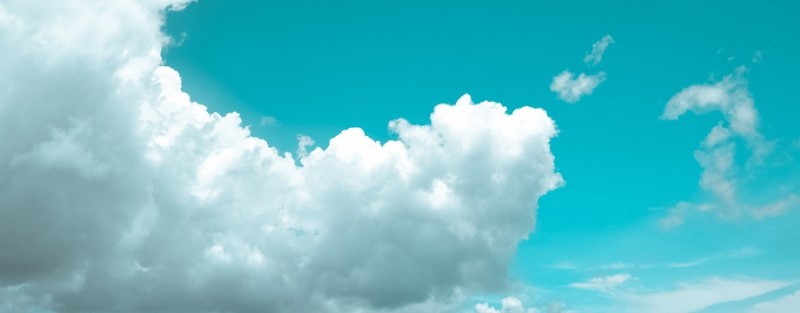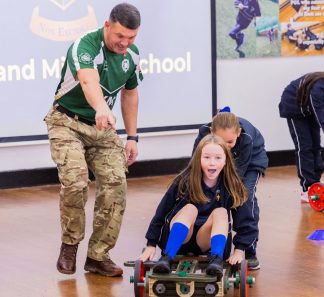26 impactful STEM activities for secondary school kids – with instructions!
Kids who have a head start in STEM have the best chance of a career that will shape our future.
In this article are 26 great STEM activities for developing STEM skills in children and young people.
These STEM activities include quick games with minimal equipment, months-long programs with international competition, and everything in between.
We’ve split the activities out into two sections to make it easier to find the right activity for your needs:
- To jump straight to the 24 STEM activities click here.
- To jump to the 2 longer-term STEM activities click here.
We’re sure something here will inspire you and invigorate your STEM lesson plans. We also have a specially designed STEM kit if you’d like to delve deeper.
Here’s what you’ll find in this article:
- What are STEM activities?
- Finding the right STEM activity
- 24 STEM activities for secondary school kids in the classroom
- 2 longer-term STEM activities
What are STEM activities?
STEM stands for Science, Technology, Engineering and Mathematics.
The STEM acronym refers to a set of competencies in high demand in industrial settings.
STEM activities prioritise these skills in an engaging and, ideally, enjoyable way. By helping kids to develop their STEM skills in a format that holds their attention it’s possible to plant and nurture the seeds of lifelong involvement in STEM.
Finding the right STEM activity
We’ve included a wide range of STEM activities in this article to give you a taste of the options available.
You’ll find information about age range, group size and competencies promoted to help you narrow down the activities best suited to your kids.
There’s also information on estimated time and required equipment so you can see whether you’re prepared to run the activity in question.
STEM activities for secondary school kids in the classroom
Here are 24 activities that are ideal for kids at secondary school age.
Build a Circuit
Age range: 11-16
Group size: Any
Estimated time: 1-3 hours
Required equipment: Electronics equipment or circuit building kits
STEM skills promoted: Science, technology, engineering

While circuits are covered in the National Curriculum, a lot of kids would jump at the chance to spend more time getting to know them. Understanding the science that makes circuits work is a great skill, as is the opportunity to develop the logic that makes complex circuits work.
Letting kids loose on a selection of electronics equipment can be an activity in itself (providing you run through the safety considerations and supervise them at all times). More structured technology activities are also possible: why not ask kids to build a specific type of circuit, for example?
There are also lots of kits available that let you build circuits from Playdough, vegetables, and other surprising materials: a great way to expand this STEM activity to appeal to kids of any age.
Clear Heads
Age range: 11-14
Group size: Any
Estimated time: 60 minutes
Required equipment: A guided meditation video, stopwatches
STEM skills promoted: Science

STEM can help us to live better lives, and part of this is better mastery over our mental wellbeing. This activity is nice and simple: kids listen to a guided meditation, then investigate physiological responses.
A discussion about what causes stress and how to reduce it is a great intro to this activity. You can use stopwatches and pulses to let kids count their heart rate before and after the meditation, and if you have access to other tools like a blood pressure monitor you can investigate other responses as well.
Cut Out and Make Spacecraft Models
Age range: 11-14
Group size: Any
Estimated time: A few hours
Required equipment: Templates, scissors, glue
STEM skills promoted: Science
A range of spacecraft model templates are available to download from the STEM Learning website, each of which contains instructions to build a model. These present a challenge for groups of any size, and the difficulty varies between the templates – we recommend taking a look at a few to find the best one(s) for your kids.
Design a Helpful Mobile App
Age range: 11-14
Group size: 1-2
Estimated time: 90 minutes to 6 hours
Required equipment: Project worksheets, stationery
STEM skills promoted: Technology
Kids are growing up in an increasingly digital world, and fluency is crucial for their future success. This activity, also from STEM learning, tasks them with conceptualising a mobile app designed to solve one of three environmental issues:
- Eating less meat
- Reusing or recycling things
- Using less plastic
This one is a great example of how STEM ties directly to real-world issues, and how they can be introduced to kids in an engaging way.
Design a Table
Age range: 11-16
Group size: 2+
Estimated time: 2-4 hours
Required equipment: Stationery
STEM skills promoted: Engineering
This STEM activity requires very little equipment but promotes a lot of different skills. Kids must work in groups to design and conceptualise a table for daily use for 5 people, which can extend to accommodate 8-10.
While the brief sounds simple, it incorporates a lot of areas. Kids must think about the design needs, potential designs, how to agree on a design within the group, how to create a scale drawing, how to represent features visually, and much more.
Disappearing Glass
Age range: 11-14
Group size: Any
Estimated time: 30 minutes
Required equipment: 2 large glass containers (i.e. Pyrex jug), 2 small glass containers (i.e. vial), water, vegetable oil
STEM skills promoted: Science

This one is just really cool. Inspired by the STEM Witchcraft and Wizardry booklet, you get to showcase invisibility in real-time.
Simply fill two large glass containers, one with water and one with vegetable oil. Then fully submerge a smaller glass container in each. The liquid must fill the smaller container, and the whole small container must stay beneath the surface of the liquid.
You can watch a demo of this here. It’s a great opportunity to discuss refraction and related concepts, and to show how great things can be achieved with household items.
Foley Art
Age range: 11-14
Group size: 3+
Estimated time: 2-4 hours
Required equipment: A selection of items including fabric, cling film, foil, and a variety of surfaces. Sound recording equipment and film footage (optional).
STEM skills promoted: Technology

One of the best parts about introducing kids to STEM is showing them how far and wide the skills can be used later in life. In this activity kids learn about Foley artists: the people who make and record the sounds that make video footage feel more realistic.
When you watch TV and hear footsteps, the rustle of clothing, contact with surfaces and other subtle sounds, these are the work of Foley artists. An unsung role, but one that is crucial for making TV fully immersive.
By using a range of materials, let your kids create sound effects either for a piece of provided footage, or for a scene of their own creation. You can either get them to perform their sounds live along with the footage / scene, or use recording software to capture and manipulate the sounds digitally.
Food for Thought
Age range: 11-16
Group size: 2+
Estimated time: 2-4 hours
Required equipment: Stationery, food packaging
STEM skills promoted: Science
Sometimes kids need a little imaginative element to keep them invested in an activity, and what better way to do this than by making them plan for a zombie apocalypse. This is one of the activities from STEM Learning’s Survive a Zombie Apocalypse workbook.
In this STEM activity kids must think about the ingredients and nutritional value of various foods, and identify the best foods to pick up during a raid on an abandoned supermarket. This prompts thought on the science of nutrition, and raises questions about calorific value, nutritional content, and nutrition to weight ratio.
Green Screens
Age range: 11-16
Group size: 2+
Estimated time: 1+ hours
Required equipment: A green screen app, a green backdrop, lighting, background images in JPG or PNG format, mobile phone or computer
STEM skills promoted: Technology

Kids may have heard of green screens already from their favourite movies, but it’s unlikely they’ll have used the technology themselves. This STEM activity aims to change that!
The list of equipment is a little longer than some other activities, but this is fun and engaging. Using a green screen app and a backdrop, you’ll work with kids to create footage that takes advantage of the green screen method.
By substituting out the green screen for alternative background images, kids will learn how the technology is put to incredibly versatile use in film special effects.
We recommend telling kids to wear plain white or plain coloured clothes.
In Control
Age range: 11-14
Group size: 2+
Estimated time: 3+ hours
Required equipment: Worksheets, stationery, internet access, craft materials if you’re requiring them to build a prototype
STEM skills promoted: Engineering
In a similar vein to the Design an App activity, this STEM activity ties directly into real-world situations. Kids are tasked with designing a device that can be attached to and powered by a bicycle.
There are prompts in the activity documentation about potential needs the device could fulfil.
Lie Back and Float
Age range: 11-16
Group size: 2+
Estimated time: 1 hour
Required equipment: Containers of water, fruits or other objects with varying buoyancy, scales,
STEM skills promoted: Science
This is the fifth activity in STEM Learning’s Sporting and Performance booklet. Here kids are presented with questions about buoyancy, then given the opportunity to explore which objects float, which sink, and the properties that determine which.
The guiding prompt is how treading water can be made easier, and various interesting areas are explored. Why do some heavier objects float more easily, for example? Or how can changing your shape in the water determine how easily you can float?
The Marshmallow Challenge
Age range: 13-16
Group size: 3+
Estimated time: 45 minutes
Required equipment: Marshmallows, spaghetti (uncooked!)
STEM skills promoted: Engineering, mathematics

A favourite team-building exercise in corporate settings, but also a fantastic activity for kids that requires very little equipment – you can grab the stuff for this one from the shop on your way to work.
The brief is simple: kids need to build the tallest possible freestanding tower within the allocated time, using nothing but marshmallows and spaghetti. We find this activity works best when you give no instructions beyond those above, and just let the kids get on with it (obviously intervening if any arguments break out).
We’ve written a lot about the marshmallow challenge on our blog, including this post featuring downloadable versions of resources to help you run it.
Need a Rope?
Age range: 11-14
Group size: 2+
Estimated time: 45 minutes
Required equipment: Carrier bags, cling film, other bits of plastic. A Newtonmeter (optional)
STEM skills promoted: Science, engineering

Plastic pollution is a huge problem, and getting kids to think of practical ways to deal with it is a great prompt. In this activity your kids are trapped on a desert island. They need a rope to climb a tree to get some food, but all they can find is washed up plastic.
Give them access to a range of plastic bags and other items, then ask them to think about how these could be turned into a rope. What properties should good rope have? How can plastic be manipulated without tools?
As an optional test, use a Newtonmeter at the end of the activity to see which group has the strongest rope.
This activity is from the STEM Desert Island Booklet.
Paper Sizes
Age range: 11-16
Group size: 1-2
Estimated time: 2-4 hours
Required equipment: Worksheets, different sized sheets of paper, measuring equipment
STEM skills promoted: Mathematics
This one might sound boring initially, but bear with us! Kids here are tasked with measuring different sized pieces of paper in the A and B international series (A4, A3, etc). They are prompted with identifying patterns in the sizes and, later, thinking about possible purposes of the various sizes.
The activity combines practical skills with thoughts about real-world information that will be useful later in life.
Reaction Times
Age range: 11-16
Group size: Any
Estimated time: 1-3 hours
Required equipment: Worksheets, stationery including rulers, timing equipment
STEM skills promoted: Mathematics
This is a great activity that’s quick and easy to do. You’re tasking kids with measuring reaction times, and leaving the rest to them. They need to decide what type of reaction to measure, how to prompt the reaction, how to measure it, and how to create the measuring device.
Find the required resources from STEM Learning here.
Running Tracks
Age range: 11-14
Group size: 2+
Estimated time: 1-2 hours
Required equipment: Worksheets, stationery
STEM skills promoted: Mathematics
We love this one because it takes an interesting question hidden in plain sight, and gets kids thinking about it. What better way to stimulate an inquisitive interest in the world around them?
Here kids are tasked with thinking about the different tracks on a running track: do runners in each track cover the same distance? How can the race be made fair if runners start at the same point? The task documentation also contains other prompts to expand the activity.
Silent Steps
Age range: 11-16
Group size: 2+
Estimated time: 2-4 hours
Required equipment: Stationery, materials including fabric, foil, paper, tissue and others
STEM skills promoted: Engineering
This is another activity from STEM Learning’s Survive a Zombie Apocalypse workbook, which you can see here.
Here, kids are tasked with designing covers for their shoes that help them to move silently on a variety of surfaces. The reason? Hordes of zombies have entered the school, and they’re super attentive to noise. Kids must conceptualise and create shoe covers to facilitate a silent escape.
Smart Showers
Age range: 11-14
Group size: 2+
Estimated time: 40 minutes
Required equipment: Stationery
STEM skills promoted: Science
Gamification is the act of incorporating game elements into an activity to make it more interesting, and is a great way to get kids interested in issues that may otherwise bore them. Water usage in the home, for example.
STEM Learning have put together a booklet called How Can We Live Smarter which contains a handful of activities designed to get kids thinking about ways to improve the effectiveness and efficiency of our homes. This activity is from the booklet, and tasks kids with creating a game based around reducing the amount of water used when showering.
The aim is to create the game and design a scoreboard to facilitate playing it.
Solve the Case of the Barefoot Burglar
Age range: 11-14
Group size: 2+
Estimated time: 1 hour
Required equipment: Computer access, pen and paper
STEM skills promoted: Technology, science

While the interface is a bit basic, this online STEM activity is a good introduction to various forensic concepts like fingerprinting, teeth impressions and more.
Kids work together to review a crime scene, analyse clues, construct a case, and convince a jury of their peers about their findings. You can do the activity here.
And if you’d like some state of the art
Spread the Word
Age range: 11-14
Group size: 2+
Estimated time: 1-2 hours
Required equipment: Electronics items or a Morse Code phone app, Morse Code primers
STEM skills promoted: Science

You can either use a Morse Code mobile phone app or build a transmitter: it depends on how involved you want to get with the engineering aspect.
Whichever you choose, give your kids a Morse Code primer sheet, then get them to practice communicating with each other. Once they’re familiar, distance them out so that they can only communicate via Morse Code, and ask them to transmit specific messages.
This is also part of the STEM Zombie Apocalypse Booklet, but there’s no need to limit transmissions to zombie topics.
Stop Motion
Age range: 11-16
Group size: 4+
Estimated time: 4+ hours
Required equipment: A camera, SD card, computer with image processing software, household objects, ideally some figurines like Lego men, Playmobil or similar
STEM skills promoted: Technology

Stop motion animation is incredible when you think about it: just by stitching together still images, it’s possible to create rich film sequences!
You have a lot of options with this activity. You could work with your whole group to plan, shoot, and create a stop motion film. You could split them out into groups and task them with creating their own 30 second shorts. Or you could hone in on some aspect of the process rather than doing the whole thing.
Whatever you go for, your kids will love having the opportunity to make a movie. Even if the animations are basic, seeing their creation quite literally come to life is sure to light a spark of inspiration.
Tiny Dancer
Age range: 11-16
Group size: 2+
Estimated time: 2-4 hours
Required equipment: AA batteries, copper wire, Neodymium disk magnets, pliers, crepe paper, template
STEM skills promoted: Technology, engineering

Move over Elton John, there are new tiny dancers on the block. This excellent activity from BabbleDabbleDo uses copper wire, batteries and magnets to make twirling ballerinas.
It’s a great way to demonstrate so many things: magnetism, circuits, wire work, and so on. Getting your kids to create these swirling dancers lets them practice these skills while creating something nifty to take home and show off.
We’ll point you towards the original article for instructions, as a couple of steps are a bit involved.
Three Dice
Age range: 11-16
Group size: 1+
Estimated time: 2-4 hours
Required equipment: Worksheets, stationery, dice
STEM skills promoted: Mathematics
This STEM activity has a strong maths focus, with an emphasis on probability. Kids must figure out the numbers most likely to occur when the numbers of three rolled dice are totalled.
Water Cycle in a Bag
Age range: 11-14
Group size: Any
Estimated time: 30 minutes to set up, several days of observation for full impact
Required equipment: A Ziplock bag, Sellotape, some water infused with food colouring
STEM skills promoted: Science

This activity is so simple and elegant – we love it. All you need to do is put some water in a Ziplock bag, add some food colouring so it’s clearly visible, close the bag, then tape it to a window.
Over the next few days the water in side will evaporate, gather round the top of the bag in the form of condensation, then reach critical mass and fall back down in the form of ‘rain’.
Kids get to see the water cycle from start to finish from the comfort of the classroom!
Longer-term STEM activities
These activities span weeks to months, and often contain the option for a competitive element. If you’re looking for a longer term activity for a STEM club, for example, these may be a good fit for you.
Faraday Challenge Days
Age range: 12-13
Group size: 4+
Estimated time: Several weeks
Required equipment: Various, depends on the nature of the brief
STEM skills promoted: All STEM
The Institute of Engineering and Technology (IET) runs an annual competition of STEM activity days tailored to students aged 12 and 13. Faraday challenges are based around real-world STEM issues, and teams compete to create the best solution to a given brief.
The top 5 teams get an all-expenses-paid trip to the final, with a £1000 prize available for the winning team’s school to spend on STEM activities.
The IET also offer Virtual Faraday Challenges which follow a similar logic but are suited to a wider age range of kids, from 7-15.
There are many resources on the IET website to help you organise your own Faraday events, or to enter your school in the various competitions they offer.
Greenpower
Age range: 9-25
Group size: 5+
Estimated time: Several months
Required equipment: Various, depending on program
STEM skills promoted: All STEM competencies
If you’ve ever wanted to build and race a soapbox car, then Greenpower is for you. This challenge employs all STEM competencies to design and build an electric car, which can then be entered to race at Greenpower events.
The IET Formula Goblin is for ages 9-11 and the IET Formula 24 is for secondary aged kids (11-16). Information about each can be found on the Greenpower website.
Conclusion
STEM skills are crucial in the modern world and there are plenty of ways to incorporate these competencies into your classroom or STEM club. The STEM activities are just a small sampling of those available, and should help to point you in the right direction.
You can also check out our MTa STEM Kit: 24 fun and thought-provoking activities for young people, centred around STEM competencies (Science, Technology, Engineering and Maths).
If you’d like to discuss which kit would best fit your needs, get in touch with our team. We’ll be happy to help.

